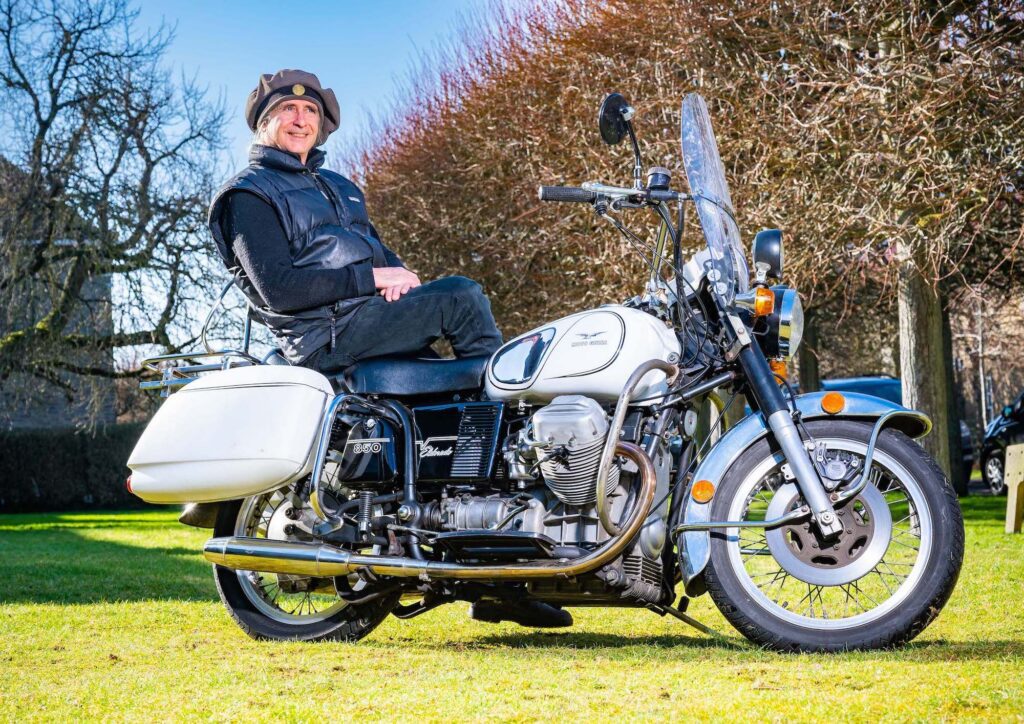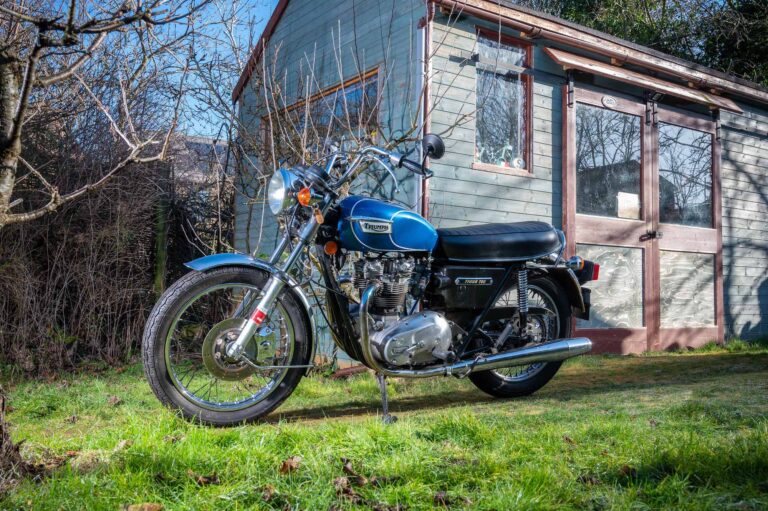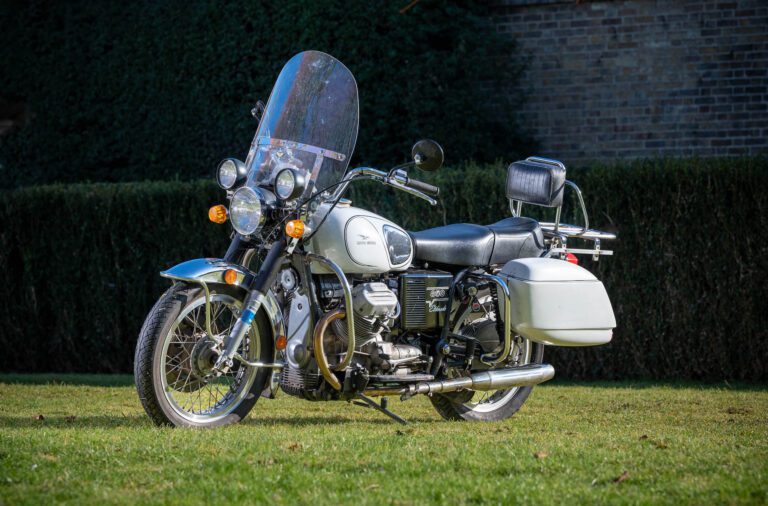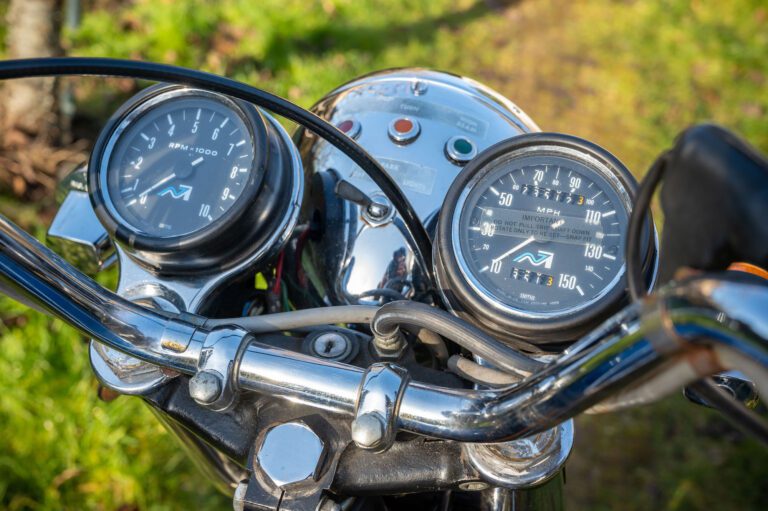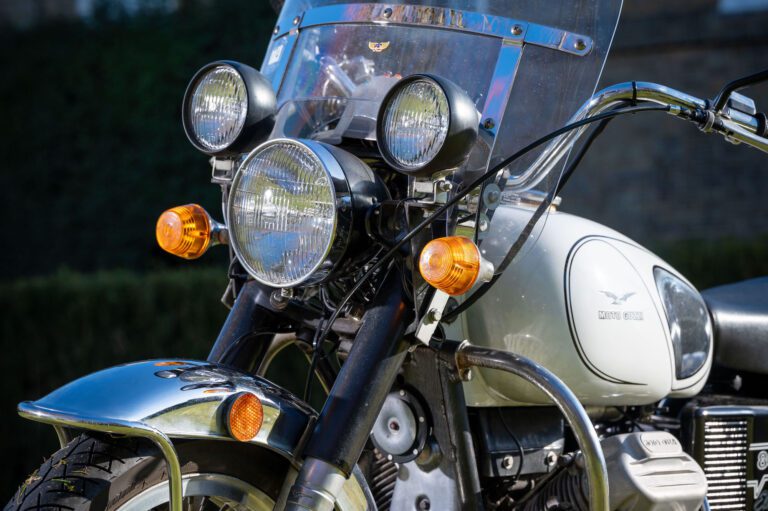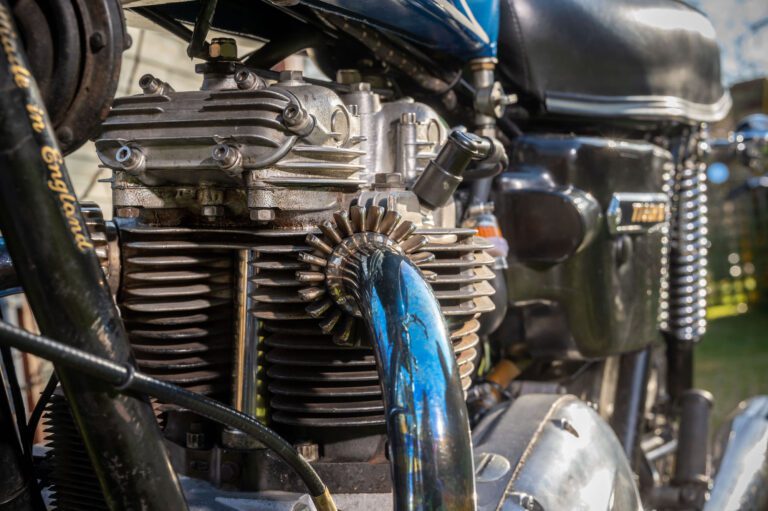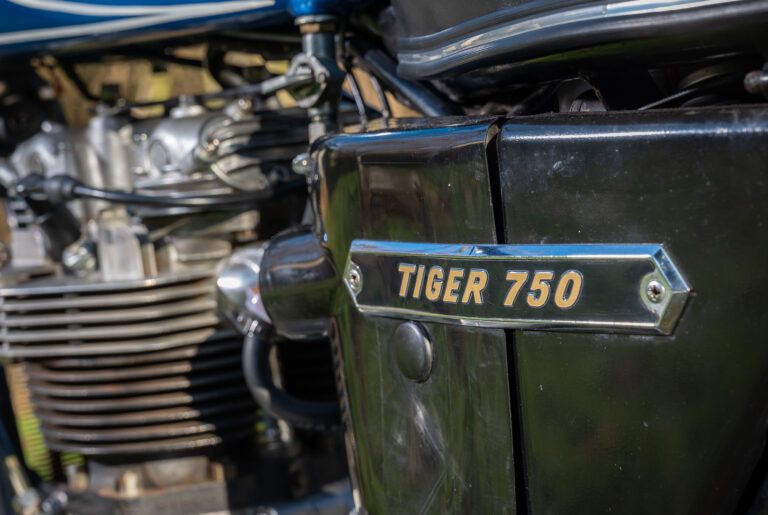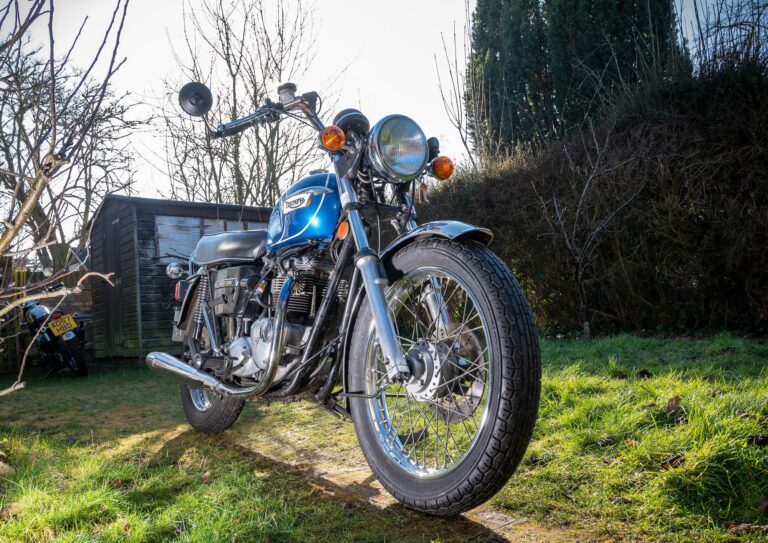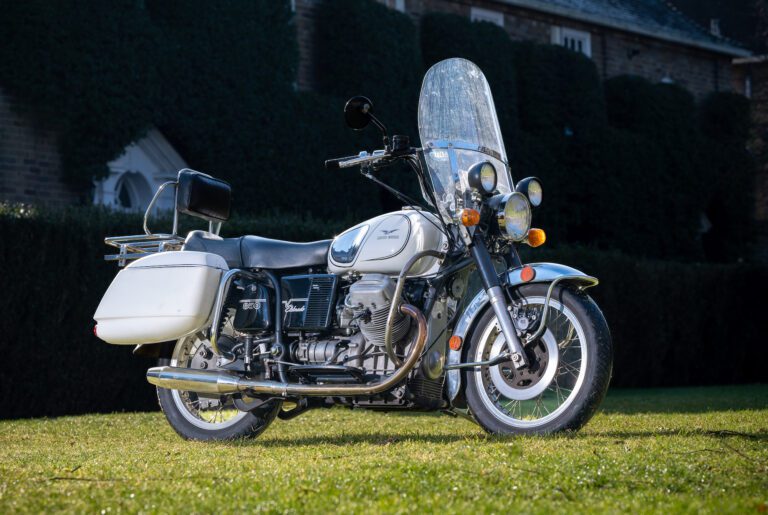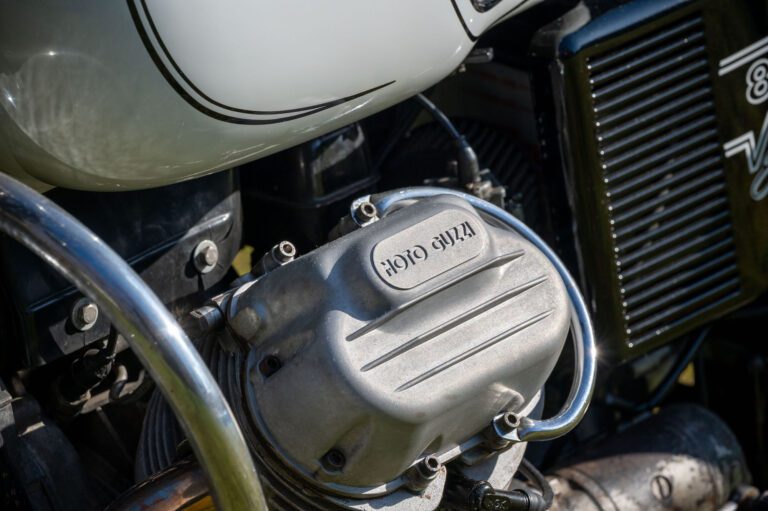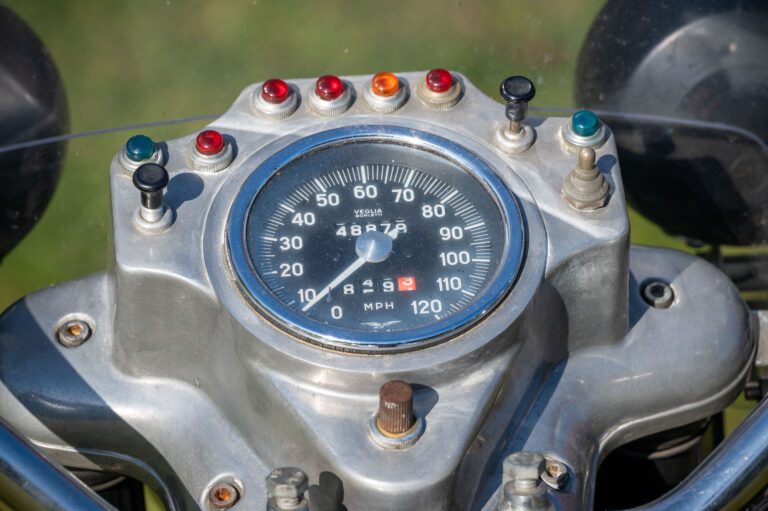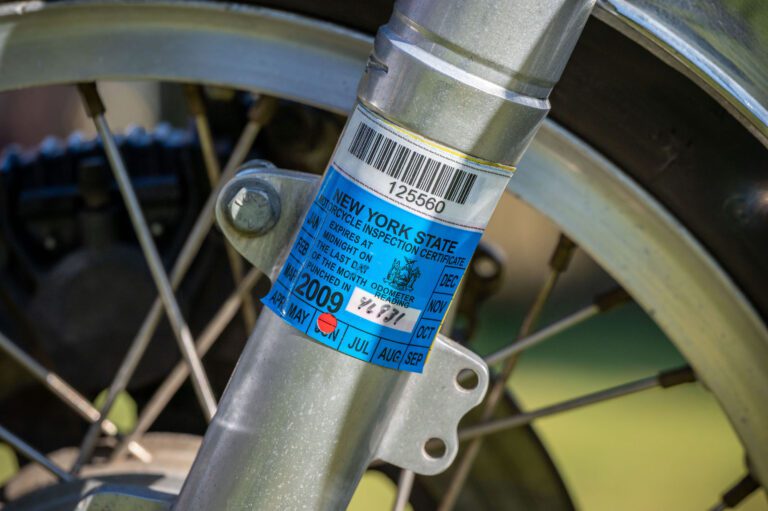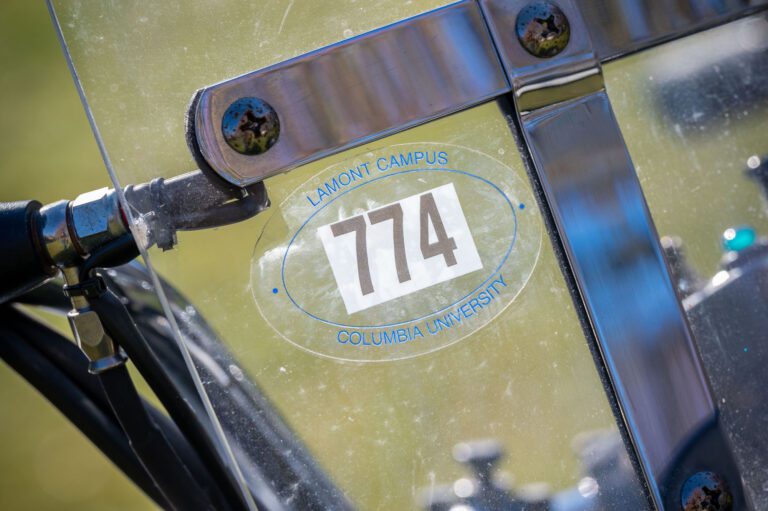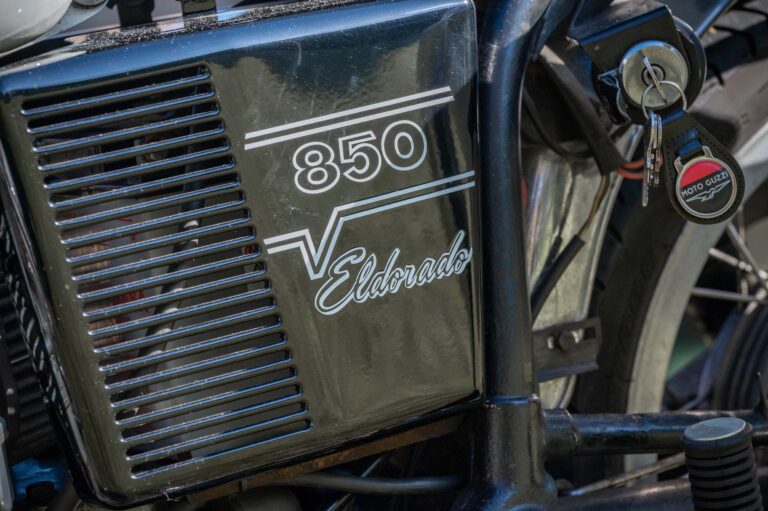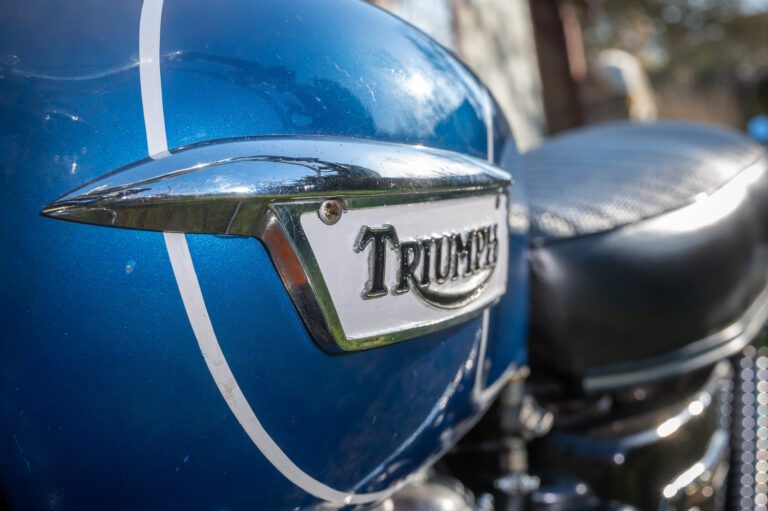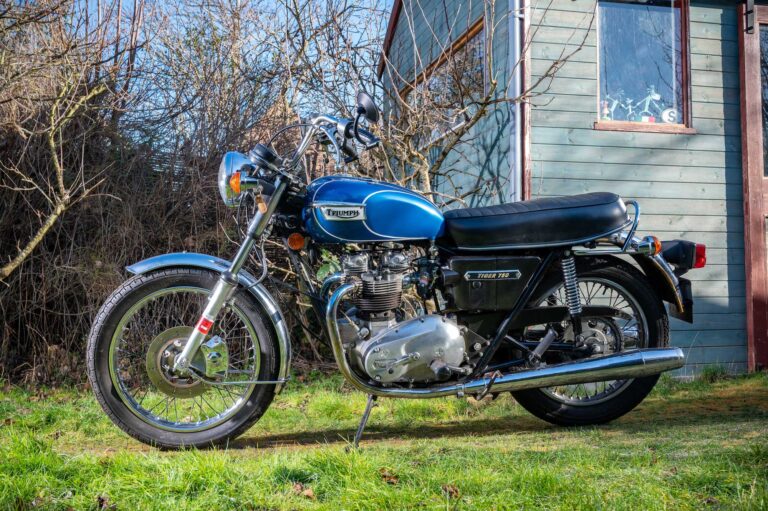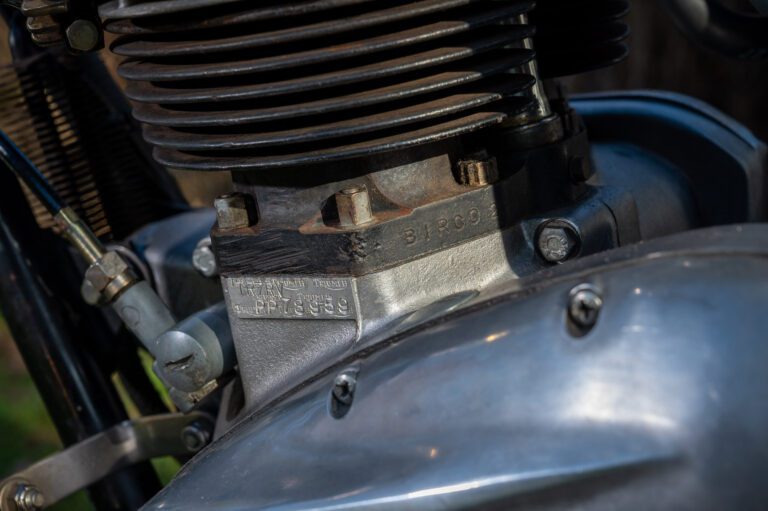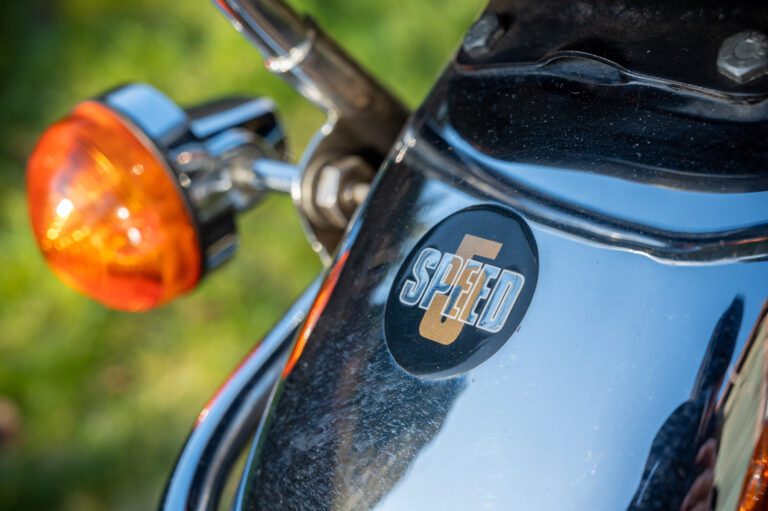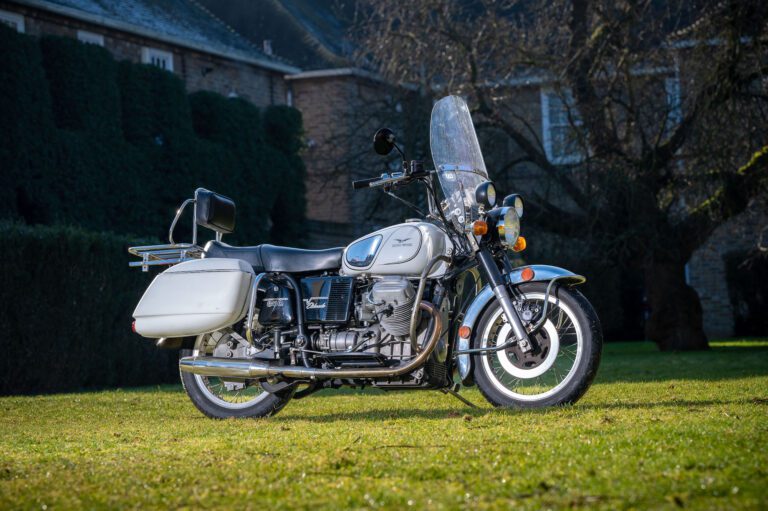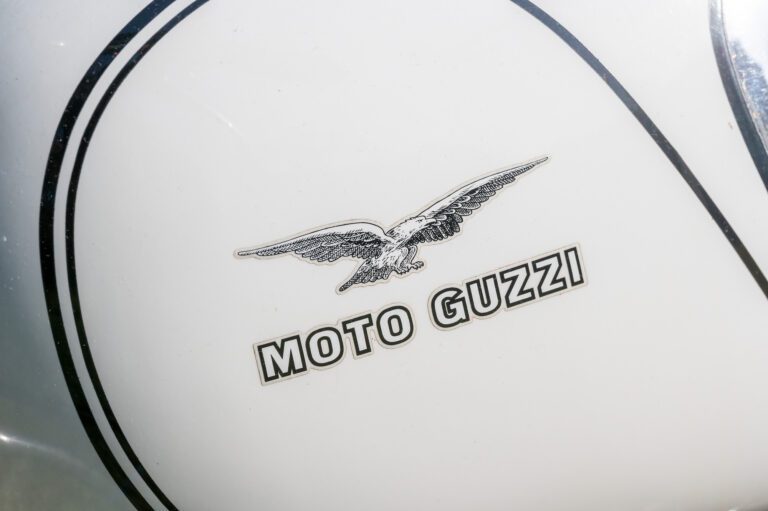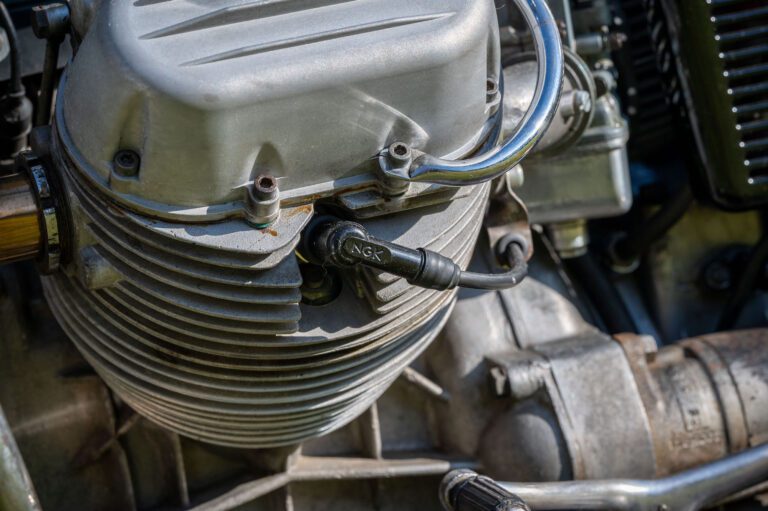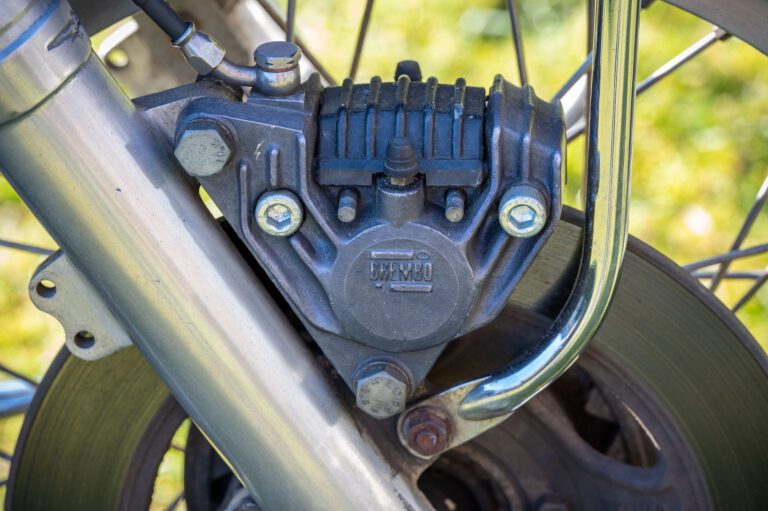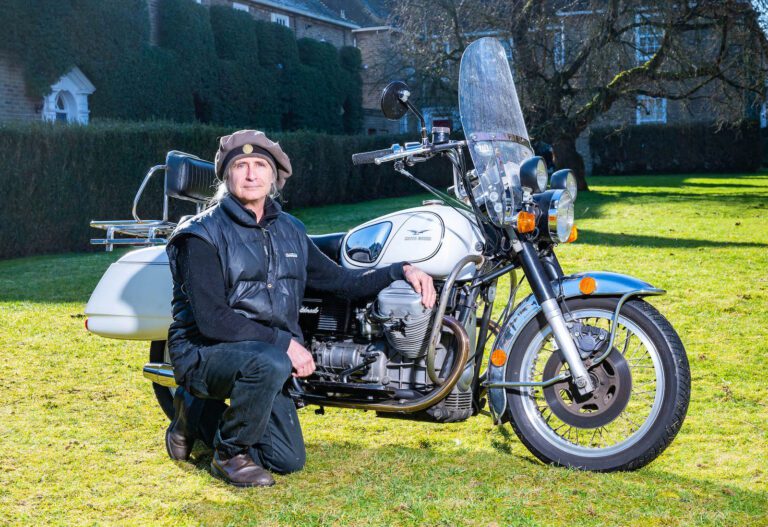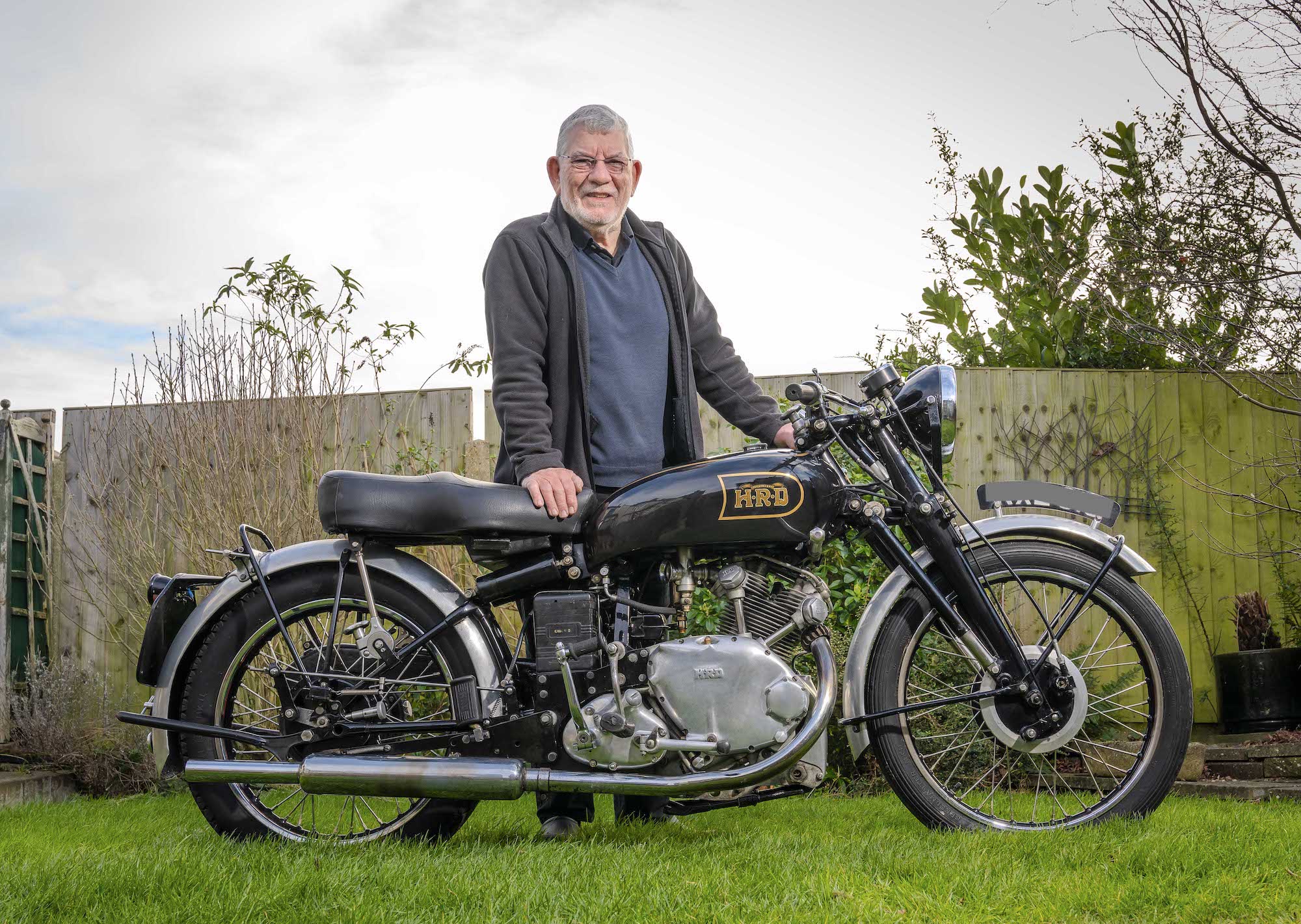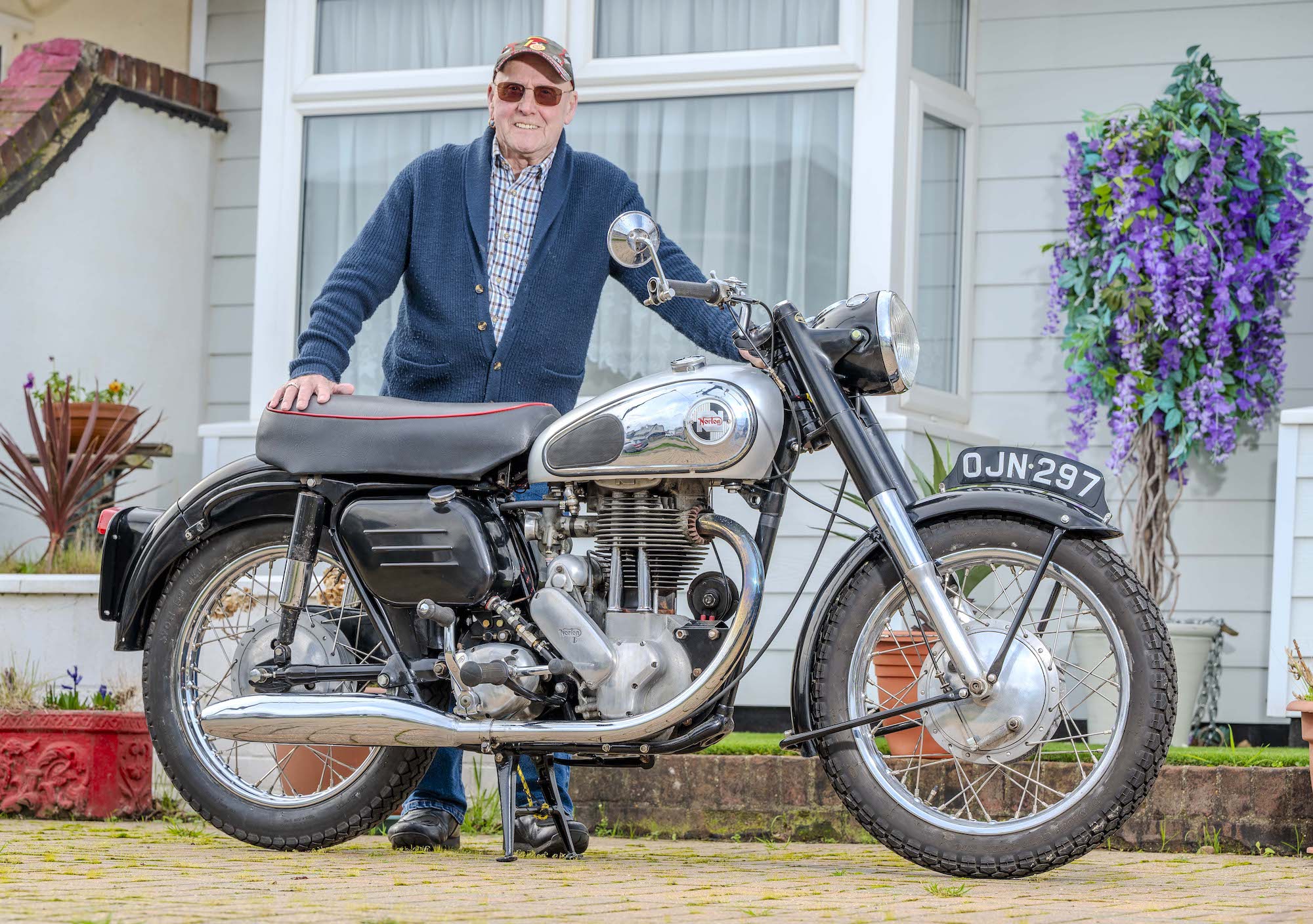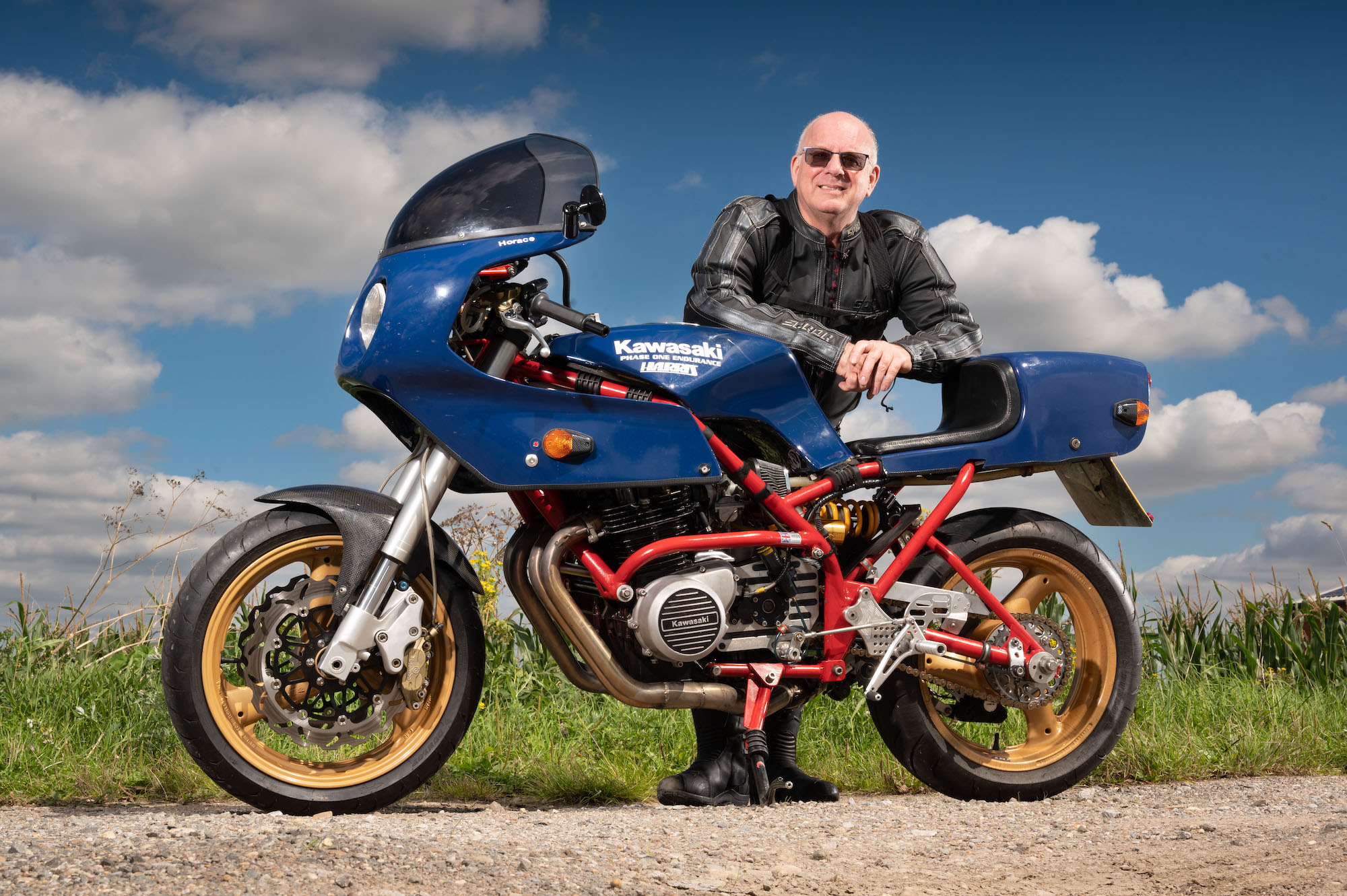As a student of Zen and the Art of Motorcycle Maintenance, it’s perhaps no surprise that Paul Krusic has an almost spiritual connection with the bikes that have played such a huge part in his life.
First and foremost, he still loves riding them 50 years after cutting his teeth on his father’s Honda but, as the decades have rolled by, it now goes much deeper than that.
“I’ve found as I’ve gotten older, I enjoy more really just spending time with them, and that doesn’t mean fixing them or pulling them apart, but actually it just means dreaming about them, being in their presence,” says the 64-year-old, originally from California and now living in Cambridge.
Spending time with the bikes is like “therapy”
“I find myself often just walking out with a cup of coffee and just sitting amongst them reading a book and that, for me, is a bit of therapy.
“In the past it was more ‘oh gosh, I’ve got to fix it’ because it was my only means of transportation, but now I’m happy that I can afford motorbikes and get this kind of therapy from them. I firmly believe life is backwards – we should have all the good stuff when we’re young.”
The two longest-serving members in Paul’s stable of four bikes are the ‘74 Moto Guzzi Eldorado Police Special, bought in 1984, and the ‘77 Triumph Tiger 750, bought in 1986 for his then girlfriend, Nancy.
Both bikes have travelled with him from the US, to Stockholm in Sweden, and now to Cambridge, where he works at the university as a specialist in the study of tree rings.
This affinity with the natural world goes hand in hand with his love of motorbikes, whether it’s riding on the tree-lined parkways north of New York, the wide open spaces of Sweden, or the undulating B-roads of Cambridgeshire.
“It’s about knowing your surroundings,” he says. “It sounds corny, but it’s the oneness with the road, contact with the environment, the things that make us human. I fear we’re moving more to this AI kind of world where the virtual is replacing the visceral.
“The other part of it is understanding how things work. A motorcycle in my history growing up was a wonderful classroom for learning how things work and trying to fix things, and to want to fix things.
“Philosophically, it’s very important to know where things come from, how they work and what can be fixed because I think it really challenges one’s mind to solve problems.
Conserving bikes instead of making new ones
“I’m all for conservation, even down to materials, and that’s another reason I keep these older bikes – I don’t want to be responsible for the extraction of new raw materials from the earth to make a new bike when these ones work.”
As a 14-year-old, Paul remembers sneaking his father’s Honda out of the garage and going for a ride, before buying his own first bike – a two-stroke Yamaha RD350 – a few years later.
“I used to commute on that from Wilmington, Delaware, where my parents lived, to Durham, New Hampshire, for the Fall holidays, almost 200 miles,” he says. “It’s a pretty long ride on the I-95. I sometimes got caught in this horrible weather, hurricane-type torrential downpours.
“I’d pull into the rest areas, take the spare garbage bags from underneath the garbage bins, cut a hole for my head, two holes for my arms, tie a rope around my waist so I didn’t blow away, and slipstream trucks at 60mph.
“That’s one of the nice things about living here in the UK – you can ride all year round. There’s only been about two weeks, over Christmas maybe, when there’s just too much salt and frozen pockets here and there, but I’ve pretty much managed to ride every day. In New Hampshire we have proper seasons – there’s a four or five month period from November to March when there’s either snow or ice or slush that you don’t really want to ride on, and the highways department uses so much salt it’s ridiculous.”
After the Yamaha came a slew of mostly Japanese bikes until Paul bought his first Triumph, a ‘69 Bonneville.
Falling in love with British engineering
“I fell in love with this push-rod, really simple, British engineering where form follows function,” he says. “They’re easy to work on, but with confusing sized bolts everywhere, and that’s when I really learned motorcycle mechanics, how to pull a motor apart and put it back together.
“And you had to, because invariably they’d leak. I can’t pull up in a parking lot dripping and smelling that beautiful smell of hot oil. Some people like it, some people think it’s a safety hazard. You learn a lot and it was great for that.”
After about six years, Paul took the Bonny to a well-respected motorcycle workshop to have the engine rebored, but on picking the bike up he got half a mile down the road when the motor seized.
“The mechanic had forgotten to put new oil back in, but to their credit they gave me the pick of the used bikes in their showroom,” he says. “That happened to be a ‘79 Bonny special, which really was something special.”
Having graduated from New Hampshire University, Paul worked as a forester and would ride the Bonny to work at the Forestry Service Lab in Durham, and that’s where the Moto Guzzi entered his life.
“A colleague of mine saw me pull up on this Bonny and said ‘you like bikes? I’ve got one for sale’,” he remembers, his interest piqued by the Guzzi Eldorado. “My heritage through my father is Italian and Slovenian, and at the time my uncle had a beautiful Laverda that I just goggled over.
“I wasn’t avidly looking for an Italian bike, but he brought it to work one day, it sounded good, and I instantly bought it for £1900.
“The idea was this was something I could use to travel longer distances, cheaper than a car, and it was Italian. I didn’t realise at the time that I probably just shot myself in the foot – it never ran really well, it had this habit of pre-detonation at high speeds.
“If you imagine the sparks exploding before the piston has reached the top of its throw, pushing it back down prematurely. I struggled – is it fuelling, is it ignition, is it valve timing? I just couldn’t sort it out, so for a number of years I really didn’t ride it much.
Fixing the Moto Guzzi Eldorado
“When I moved to New York in about 2000, I found there was a shop nearby that specialised in Guzzi repairs. Sure enough, the cylinders were cone-shaped, wider at the top and narrower at the bottom, and they had to be completely exchanged with new liners.
“It was a bit of a bullet to bite because it wasn’t cheap, but I thought ‘I’ve had this bike for so long’, I’d ridden it a number of times from New Hampshire to Delaware with the pre-detonation – and I still enjoyed riding it.
“Now it runs wonderfully. What a difference.”
The 850cc Moto Guzzi Eldorado was built to compete with Harley-Davidson in the American long-range tourer market, in particular to take sales from Harley in law enforcement.
Indeed, a ‘police’ fuse box offering several extra terminals for accessory circuits came as standard, and the Italians bent over backwards to make the bikes suitable for US police.
They courted younger California Highway Patrol and Los Angeles Police Department (LAPD) officers, taking at least one bike to the US for testing, and ultimately sold thousands of Eldorados across several States.
Paul’s colleague told him he bought the bike from an LAPD auction, and the tank had “two nasty scars where Moto Guzzi would have been written, and there’s a bracket for the siren, and the fittings for the flashing lights and a radio”.
While living in New York and working at Columbia University, Paul would ride the Guzzi north along the Hudson River.
“It immediately turns rural, and you have these wonderful parkways, these beautiful tree-lined two way roads that follow the river, lovely for cruising,” he says.
He still had the Triumph Bonneville Special alongside the Guzzi, but in the late ‘90s his then-girlfriend wanted a canoe…
Deciding which bike to part with
“I had to make one of those horrible decisions you have to make in life, which one of the two needs to go?” he adds, settling on the Triumph. “So my message to readers – have three, or four.”
Back to 1986, and Paul – taking inspiration from Zen and the Art of Motorcycle Maintenance – and his girlfriend Nancy had decided on a road trip.
He bought her a ‘77 Triumph Tiger 750 to replace her Yamaha, while he would ride the ‘79 Bonny.
“We thought we’d do it a little different from the authors,” he says, of Robert M Pirsig’s fictionalised account of his 17-day journey on a Honda CB77 from Minnesota to Northern California.
“We planned to ride from New Hampshire to Vancouver, across Canada and, as aspiring scientists, we thought to justify in our minds this ludicrous idea was to take samples from trees across Canada on our way to Vancouver.
“We’d pull into national forests and take and collect tree core samples, and analyse them when we got home to see trends and growth rates of trees across the continent.”
In the event, they got about four day’s ride and 550 miles into their 6,000-mile round trip when disaster, and reality, struck.
“We got as far as Mattawa, Ontario, when my girlfriend broke her ankle,” says Paul. “She was using a two-part hand drill to take a tree sample, and on pulling this tool out the handle came off and she fell backwards. There happened to be a depression in the ground where her foot landed.
“There was a really nice provincial hospital there. Americans without health insurance, in Canada, with socialised medicine. They just looked at you, but they had pity on us.”
Realising the couple had bitten off more than they could chew
Another 5,500 miles with a broken ankle was out of the question, but the couple also realised they had possibly bitten off more than they could chew.
“It was common sense – a combination of the ankle and realising what lay ahead,” says Paul. “We’d done the easy part, and the distances between cities and towns would start to get larger, between petrol stations particularly.”
To allow Nancy to change gears on the journey home, Paul rummaged in a local hardware store’s bins and found a piece of metal he could fashion “with pliers and wire cutters” into a little paddle built into her cast.
“We protected her open toes with tape and plastic, and once her cast was dry and set enough, and she was eager enough, we got back on the bikes and turned around,” he says. “She was a real trooper, and we’re still good friends.”
Nancy kept the Tiger until the Spring of 2001, when Paul received a phone call.
“‘Hey Paul, do you want the Triumph back?’” he smiles. “‘Yeah, I’ll give a thousand bucks for it’. She’d kept it well, so hats off to Nancy. I had to have it back – it’s beautiful, it’s sentimental, it’s got history.
“For me, in my era growing up in the ‘70s it’s the ultimate Triumph construction with the parallel twin, push rod, five speed integrated motor unit, disc brakes, and a single carb, which makes it really special. Tuning it is a breeze, there’s none of the twin carb balancing and synchronising.”
Paul and his Swedish wife Anna moved with their children to Stockholm in 2008, and the bikes went with them, as well as a ‘67 Land Rover Series IIA.
“I used both bikes over there, but not as often as here because, again, you’re further north, but in the summer I’d ride them to work and do some cruising around with my wife and taking my kids to school,” he says.
Then in April 2017, he came to Cambridge ahead of his family to find a place to live, putting the Triumph on a trailer behind a Land Rover Defender 110.
The Moto Guzzi followed in August 2018, again towed behind the Defender while Anna drove over in the IIA.
Since being in the UK, Paul has made further improvements to the Eldorado, a “fantastic electronic ignition” installed by the “fabulous people” at Made in Italy Motorcycles in Stowmarket.
Moto Guzzi Eldorado “just takes off”
“It’s remarkable – one can programme the acceleration curve,” he says. “I don’t know anything about this, it’s beyond me, I’m still a points and magneto person, but it has a small computer that is constantly monitoring the speed of the engine and the delivery of spark.
“I can get on it in fifth gear, which is a pretty long gear, around 55mph and it just takes off. It has a delivery of torque it didn’t have before – there was lag but now it picks right up. I can recommend it but it’s expensive at £1000.”
Since arriving in England, Paul has added a 2003 Indian Enfield retro-restored to look like a ‘60s bike, and a ‘73 Triumph Trident that is currently away being worked on.
The Tiger and Enfield are used to get to and from work, while the Guzzi is used less frequently for longer cruises.
“But I absolutely have to use it, otherwise it just sits and looks sad,” he says.
So what are the differences between riding in the US, Sweden and the UK?
“Sweden has the most beautiful roads, marked and painted very well, but they are few and far between and then… dirt,” he says. “This area where I live is probably not the best for motorcycle riding because you have the Fens, and you cannot keep a surface smooth when it’s on peat and clay, which I totally understand. You really want to have your suspension in good order, and pay attention. Riding at night is all the more challenging, with the shadows, which is kind of fun.
“In the US you have every mix – New Hampshire is much like here. It’s a challenge but you’re not going to go really fast.”
People in Britain drive “way too fast”
Speaking of speed, Paul thinks we in this country drive “way too fast” given the quality and nature of some of Britain’s roads.
“A 60mph maximum on a B road is totally ridiculous, particularly ones that go through agricultural farmland where tractors and things are going to be about,” he says, “and you have these uneven surfaces.
“I wouldn’t say you can’t go 60 on them, but not all of them. I’ve been driving for almost 50 years, and when people see a speed limit they often think ‘that’s the minimum, doctor recommended’, but maybe you shouldn’t drive that speed.
“Also, on modern bikes the feel has been more and more removed, there is less oneness with the road. Like modern cars today, you get a pseudo sense of security and a warped appreciation for the physics of moving through space.”
As for the future, Paul’s 18-year-old daughter Amarita has recently got her CBT and is riding a Herald 125, designed and engineered in Cambridgeshire and built in China.
“I hope she’ll ride the bikes one day, because if they’re not ridden what’s the point?” he says.
“Once you’ve got the bug, the 125 is just not going to make it, you’re immediately looking for something larger, to stay ahead of traffic and not get swamped.”
If he had to sell one bike, he admits it would be the Guzzi, “largely because it’s heavy”.
“It’s sad and embarrassing to admit but I just don’t feel I have the energy as much as I did when I was younger to wheel that thing around,” he explains. “Once it’s on the road and going, it’s smiles from ear to ear. But moving it in that little shed…
“I’m taking a greater interest in British bikes, and I’m also looking at them as something to leave for my kids. I’m hoping they will increase in value and, of all of them, the Guzzi is the least valuable, because it’s the least in demand.”
For now though, the big bike that once patrolled the streets of Los Angeles will continue to cruise its way around the Cambridgeshire Fens.
